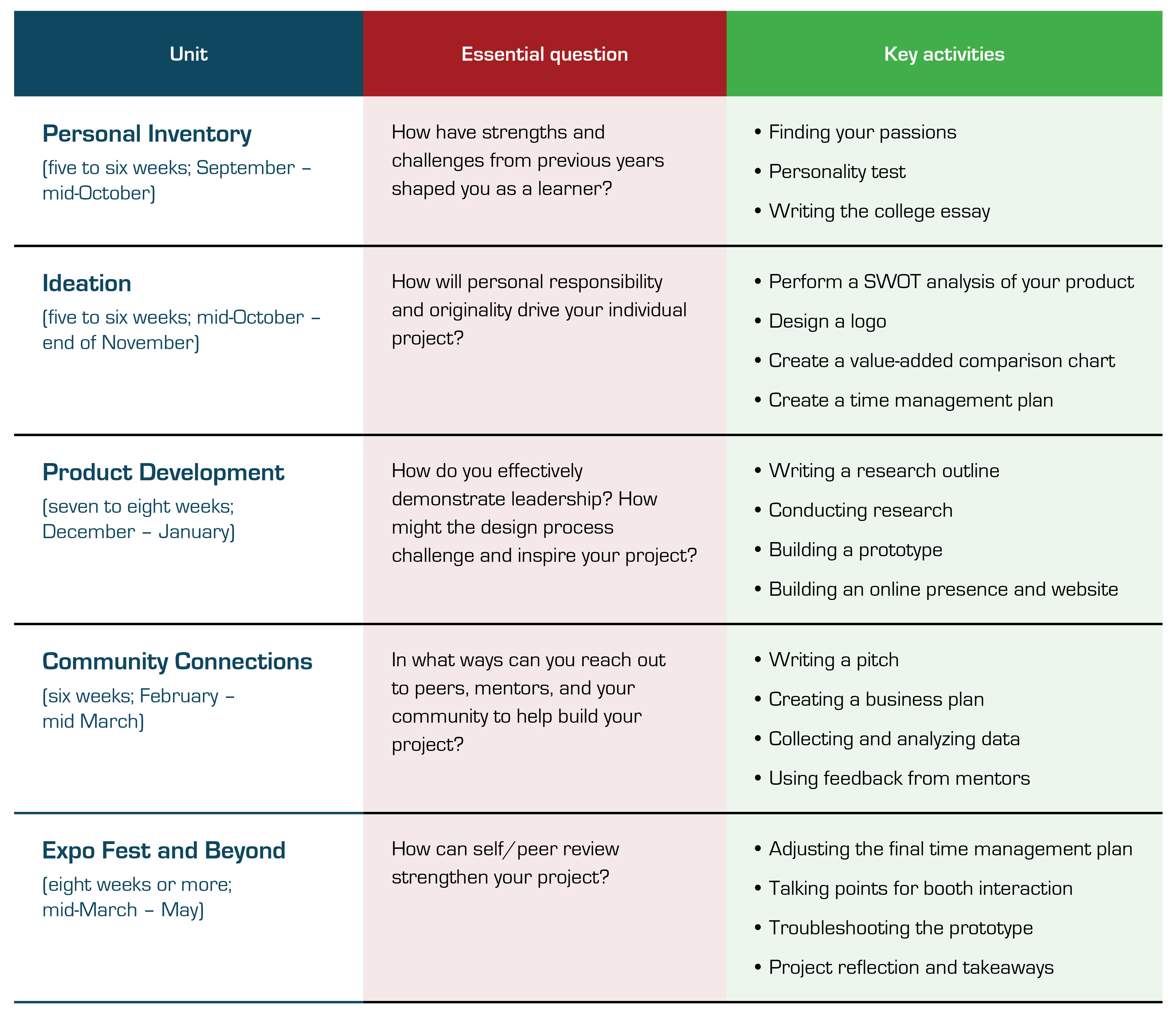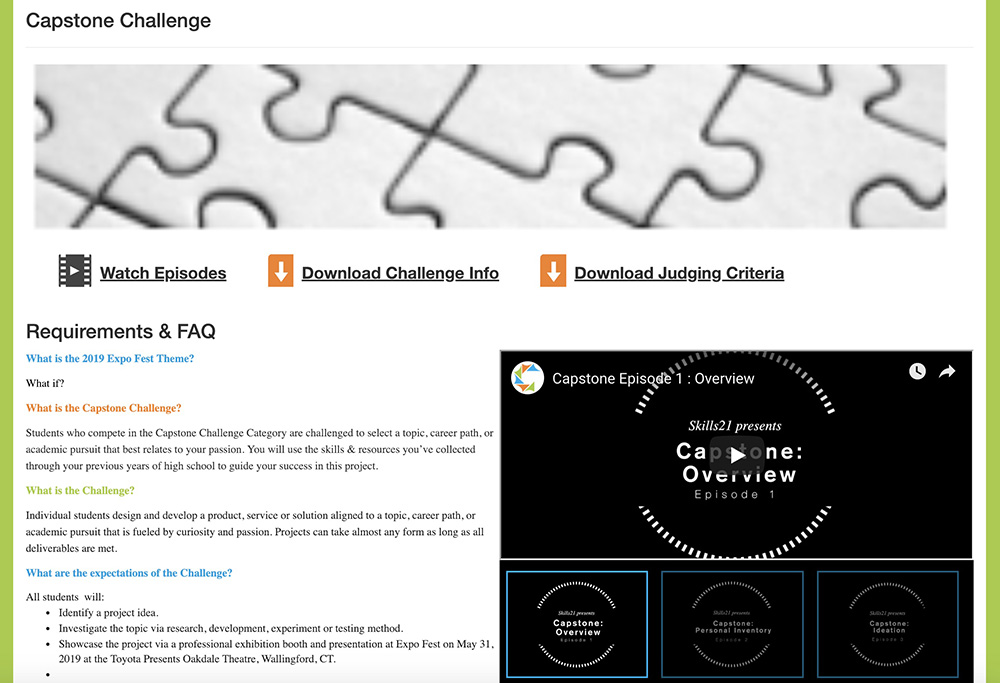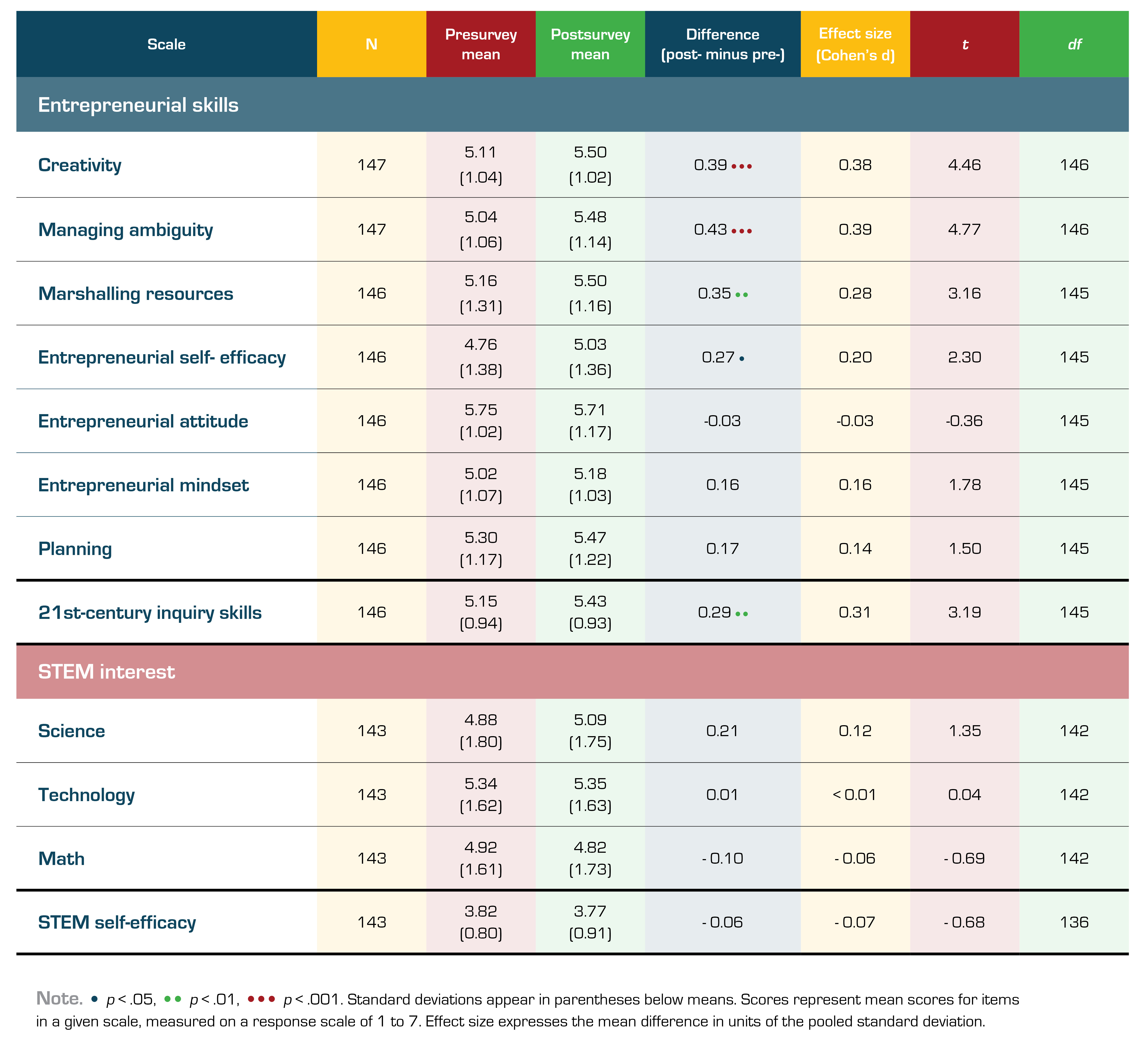Feature
STEMStarter
A High School Capstone Course to Create STEM Career Pathways
Connected Science Learning January-March 2019 (Volume 1, Issue 9)
By Elizabeth A. Radday, Katherine A. Shields, Joshua Cox, and David Bamat

High school capstone courses—culminating educational experiences for seniors as they conclude their formal high school education—have become increasingly popular across the nation, particularly in New England. The STEMStarter Capstone was designed to help Connecticut high schools meet new accreditation standards from the New England Association of Schools and Colleges (NEASC) and graduation requirements that include a mastery-based learning project. Standard 2 of the NEASC 2020 Standards (2018) for school accreditation states: “Students are active learners and have the opportunity to lead their own learning.” Methods to effectively meet this principle include
- learning that is personalized, relevant, and authentic;
- opportunities for students to determine outcomes;
- project-based activities;
- opportunities for students to apply knowledge to authentic tasks;
- opportunities for student choice and the ability to explore personal interests; and
- opportunities for students to learn in and out of school (NEASC 2017).
A traditional capstone course asks students to first conduct research on a topic of interest, then to produce some type of final written report or portfolio or give a presentation that summarizes and demonstrates student learning. While traditional capstone projects increase students’ knowledge in a particular area, they do not necessarily build the STEM or workforce skills that today’s economy demands. Many capstone projects, including the new AP Capstone course sequence of AP Seminar and AP Research, have intense and rigorous research requirements but do not expose students to job opportunities, non-cognitive skills, entrepreneurship, or business skills. This is troubling because STEM jobs in Connecticut have grown three times faster than non-STEM jobs over the last decade, and two-thirds of state GDP growth is driven by STEM innovations (Next Generation Connecticut 2013). Despite promising opportunities, high school student interest in STEM careers has not increased significantly and in some cases has actually declined in the United States (Project Tomorrow 2014). In addition, to maintain America’s economic competitiveness in the global market, encouraging American innovation and entrepreneurship is critical (Atkinson and Ezell 2013).
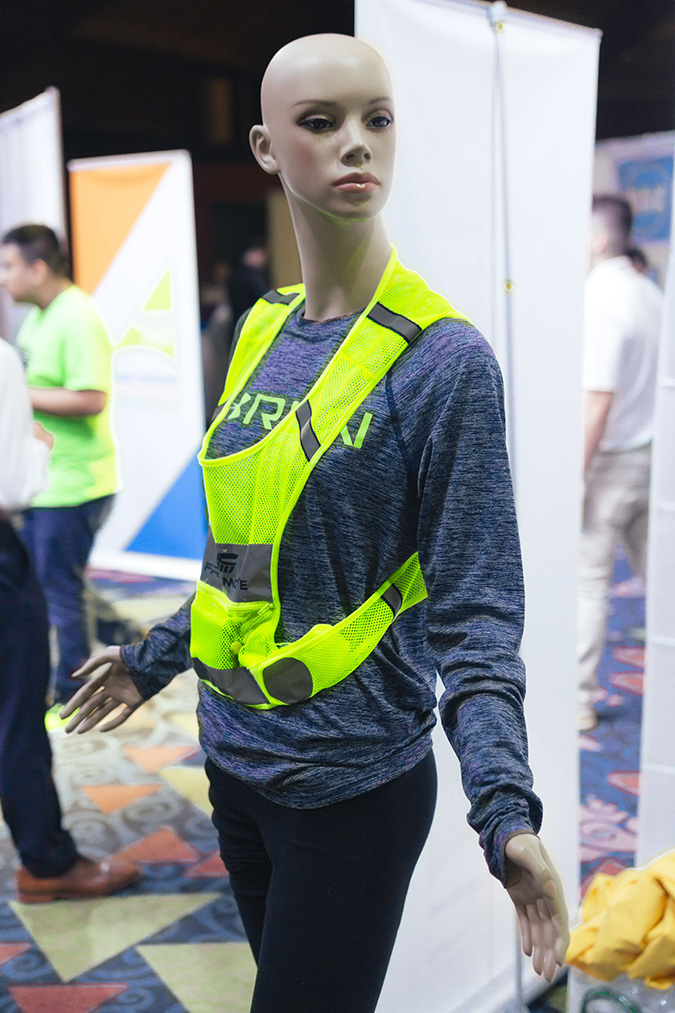
Instead of concluding the school year by turning in a long research report, over 100 STEMStarter Capstone students come together in a huge theater dome to show off their projects at individual booths. This is the culminating event for the Skills21 STEMStarter Capstone, and the excitement in the dome is palpable. On their tables are working prototypes of student-created innovations. iPads and laptops display student-designed interactive websites. Judges walk the aisles and ask probing questions about the projects. One student demonstrates his running vest designed for safety. With the squeeze of a button, he shows the judges that an emergency alert message can be sent to a cell phone to indicate that the runner needs help, including the runner’s exact GPS coordinates. Another student has a judge sit in an office chair to demonstrate that when the judge does not sit with correct posture, a light near the computer illuminates. A third student shows the judges the foundation, eyeshadow, and lipstick that she made from all natural products, inspired by her friend who had to undergo chemotherapy and could not use makeup with any artificial ingredients or chemicals.
STEMStarter: What it is and how it works
To address the needs of the current workforce, Skills21 at EdAdvance has created the STEMStarter Capstone experience with support from an Innovative Technology Experiences for Teachers and Students (ITEST) grant from the National Science Foundation. Each May since 2001, Skills21 has hosted a statewide Expo Fest, where students have the opportunity to showcase their challenge-based problem solutions to a panel of expert judges. Until recently, these projects were all completed by school classes working together as teams. In 2016 Skills21 decided to adapt the Expo Fest team model for implementation within individual senior year capstone projects. Expo Fest attendance and participation has grown each year, which corresponds with research that indicates that student interest in STEM competitions, such as FIRST Robotics and App Design competitions, is at an all-time high (Anderson 2012). Because recent research also indicates that student interest in STEM careers increases with participation in STEM competitions, it makes sense to end the capstone year as such (Miller, Sonnert, and Sadler 2018).
STEMStarter is designed to increase student interest, particularly among underrepresented students, in STEM and STEM careers; expose students to business and industry professionals in STEM fields; and increase student opportunities to learn about entrepreneurship and business. STEMStarter uses a challenge project approach to address the lack of opportunities to cultivate STEM-related innovation and entrepreneurship skills for underrepresented high school students. Skills21 intentionally recruits schools with high-needs populations, and 70% of our participating students fall into under-represented categories in STEM fields including women, students of color, and students from low-income families. One hundred and ninety-six students in 11 Connecticut public school districts participated in the first year of the STEMStarter Capstone. Schools were recruited to participate through a variety of means. Some schools that had already participated in other Skills21 challenge-based learning programs were interested in the STEMStarter Capstone program. Skills21 reached out to principals of high schools that already had an existing capstone program to see if they would be interested in implementing STEMStarter. Skills21 also held free professional development for teachers. Teachers who teach the STEMStarter Capstone are paid a $1,000 stipend by Skills21 to coach students through the capstone year and bring them to Expo Fest. Teachers must agree to participate in research activities for the grant, including scheduling two dates for Skills21 staff to conduct pre- and post-intervention surveys. Teachers must also participate in an individual interview and have their students participate in a focus group with parental permission. Classes are given a maximum of $500 for classroom supplies for projects.
Schools implement STEMStarter as a one-credit course during the regular school day and in accordance with their particular school day structure. Skills21 provides a weeklong summer professional development workshop, ongoing site visits and teacher coaching, a curriculum with resources including lesson plans, activities, and assessment rubrics, and an eight episode video series that follows a teacher and class through the process of the capstone project. The comprehensive curriculum (Figure 1) follows a unit sequence that guides students to develop their individual STEM-related prototypes for presentation at Expo Fest. The unit sequence begins with a personal inventory, followed by an ideation unit, project development, the community connection, and preparation for the presentation at Expo Fest. These units help move students into increasingly higher levels of self-management and self-directed learning. Students and teachers also have access to a custom built online platform, Launchpad, which provides course documents and resources as well as a place to showcase individual project profiles (Figure 2).
At the heart of the STEMStarter Capstone Course is the challenge assigned to all students. Each year, students are challenged to identify a real-world problem or market opportunity and then create a solution or fill the void. This challenge is presented in a simple document with a supporting rubric that is available on the Skills21 website for easy access and referral throughout the year (see appendix for Challenge Document and Rubric). Some examples of problems students addressed include runner safety, lack of information on nutrition and injury prevention and treatment for young female runners, and the lack of chemical-free makeup for chemo patients. All students create several final deliverables to make a complete Innovation Challenge Project (ICP).
Central to the ICP is the prototype. In general, students must create a working prototype of the solution they have created to address a real-world problem. For the problems listed above, the students created a safety vest that send a message to a designated phone; a website for high school and college aged female runners; and all natural, chemical-free makeup for chemo patients. Students must create a website as a central hub for their ICP. The site must include
- written documentation, including research about their topic or a business plan;
- a blog that demonstrates personal reflection on learning throughout the process;
- an introduction to their mentor; and
- a student-selected company or project name, logo, and description.
To encourage growth in STEM skills, project requirements include evidence of mathematical thinking and data analysis and some type of experimentation. Students fulfill this requirement in various ways, such as conducting lab experiments; administering surveys and analyzing data; or writing a business plan that uses mathematical models to demonstrate expenses, profits, potential growth, and potential market.
Expo Fest is the culminating real-world experience for the capstone year that allows students a chance to demonstrate their work and get feedback from an authentic audience. The event is held in late May at a large public venue, most recently at the Oakdale Theater. In addition to the theater there is a large exhibition dome. Students set up their prototypes, display their websites, and interact with judges, other students, teachers, and guests. The feeling is similar to that of a high energy trade show. The Skills21 team recruits judges, many of whom come from higher education and local companies like IBM, Sikorsky, and Cigna. Others are retired teachers and school administrators, local entrepreneurs, and graduate students. All judges are volunteers, and many come back every year.
Capstone projects are divided into categories. Some past categories have included apps, engineering, performing arts, entrepreneurship, social justice, and science laboratory research. Each category is judged by a team of three. Judges have access to student websites in advance and spend 10–15 minutes speaking with each student at Expo Fest. Each judge inputs rubric scores and feedback into Trackpad, a tool developed by Skills21 that provides rankings for each category. Prizes are then given to each winning project. Students receive the feedback and scores within a week following Expo.
The bigger picture: The out-of-school connection
A critical component to the STEMStarter Capstone Program is for students to think beyond the classroom. All students are required to work with an out-of-school mentor. Mentorships take on many different forms and range from exchanging a few e-mails with specific questions to meeting outside of school and working together on a prototype or experiment. Mentors and students often meet outside of school at the mentor’s place of employment, but they are free to connect in whatever way they feel best serves their needs. Students find mentors through a variety of channels. Some students work with a family member or family friend, while many make successful mentor connections through personal networks. Other student-mentor relationships are formed through the classroom teacher’s connections. Many students choose projects related to existing outside interests. Examples of such mentoring partnerships include a fire chief and student volunteer firefighter, a homeless shelter director and student volunteer, a coach and a student athlete, and a school robotics coach and student on the robotics team. Teachers also invite guest speakers into the classroom, who often offer their help and the help of their employees or friends. Finally, a small number of students find mentors through internet searches or cold calls.
Students in underserved communities may not have as wide a net of personal connections that can serve as mentors. However, the urban schools that have implemented the STEMStarter Capstone Program also have partnerships with nearby universities such as the University of Bridgeport and the University of New Haven, and students have been able to find mentors through this partnership. Students have even been given access to laboratory time and equipment through these partnerships. At times, the staff at Skills21 can help a student make a connection with a mentor through the business and education connections they have established.
In addition to working with a mentor, students are encouraged to work in labs, visit businesses and workplaces, and survey community members during the project development phase. Some students have prospective users test and give feedback on the prototypes. Making community connections is part of the final project rubric.
Examples of capstone projects
The following sample projects illustrate ways that STEMStarter students can develop their entrepreneurial skills, STEM career readiness skills, and STEM career interest through the program.
The SafeVest
Mark [students’ names have been changed for confidentiality] was an avid high school cross country and track runner. He wanted to address the issue of runner safety when runners are out for longer trail runs or are running alone. After surveying his cross country team, he found that many runners carry their cell phones to help them feel safe, but cell phones are large and inconvenient to carry. Also, the unfortunate reality is that if a person is attacked or severely injured, they may not have the time or ability to make a phone call. Using Arduino technology, Mark designed a running vest with a small device that allows the runner to press and hold a button that will instantly send a message to a designated contact. The text tells the recipient that the runner needs emergency assistance and also transmits exact GPS coordinates. Mark spent much of the year learning how to properly code his device so that it would reliably send a message as well as indicate the correct GPS coordinates. He conducted a second round of surveys with his cross country team to gain feedback on the product and to help select an appropriate price point for his new innovation.
Mark’s primary mentor was his track coach, who was a former police officer. Mark felt that his mentor’s experience with the running community coupled with his knowledge of the local emergency response system made him a perfect match. He obtained invaluable information about the emergency response system and current products with some similar features, such as the Life Alert button for at home use, by working with this mentor. At Expo Fest, Mark was able to show the judges his working prototype and a well-developed business plan, which included calculations for profits at different price points, mathematical models of projected growth of his company, and ideas for business growth in the future. Mark had little prior knowledge of coding and program design and made large gains in this area. Because of his experience in the Capstone program, Mark chose a college with a well-known business program and is focusing on entrepreneurship as his college major.
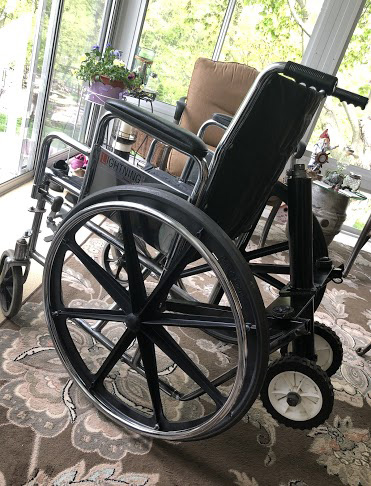
The Freedom Jack
Jane’s uncle is in a wheelchair, which led her to research common problems that people in wheelchairs face on a daily basis. One of the biggest issues she discovered is that many places are not handicapped accessible and often have a small step or incline that the wheelchair cannot go over. Jane wanted to create an easy-to-use jack to lift the chair and its user over these types of obstacles. Jane was able to modify and re-engineer a trailer jack. She worked with an engineer to design her prototype, and she also did a community survey to learn more about the potential need for her product. Jane found that over 90% of respondents felt excluded from family activities because of a lack of handicap accessibility. She also learned that the biggest struggle for her respondents in wheelchairs is getting over small inclines or steps. Jane learned how to weld from her brother, an experienced and certified welder, and she learned about the engineering process by building a working prototype. Based on her experience in her capstone course, Jane decided to pursue healthcare management in college.
Inclement Conditions Evaluator
Matt’s friends often asked him to calculate the likelihood of a snow day based on an algorithm he created in his free time during his junior year. Building on his prior work, Matt wanted to develop a website that would allow anyone to learn about road conditions for the next 10 hours in any part of the country. Matt first needed to develop a mathematical model that would rate the road conditions on a scale from 0 (no danger from weather) to 10 (extremely hazardous road conditions due to weather). Matt developed a Road Risk Model that incorporates weather conditions, location, and temperature prediction.
Matt worked closely with two mentors on this project. First, he worked with a mentor who was able to teach him how to use an Application Program Interface. This mentor worked with Matt on the computer programming of his mathematical model. Matt believes that this relationship was a huge success because his website was fully functional. Matt was also able to work with his school district’s superintendent throughout the year to learn about her thought process when determining to cancel school or delay school opening based on inclement weather. At the end of the year, Matt had a meeting scheduled with his district’s Board of Education to implement the use of his product as a key factor in determining snow days for the district. Matt is hoping that his project may be useful to other superintendents, as well as anyone driving during inclement weather. Based on his experience in this course and what he learned about programming, Matt decided to declare a computer science minor in college but was open to the idea of making this a major.
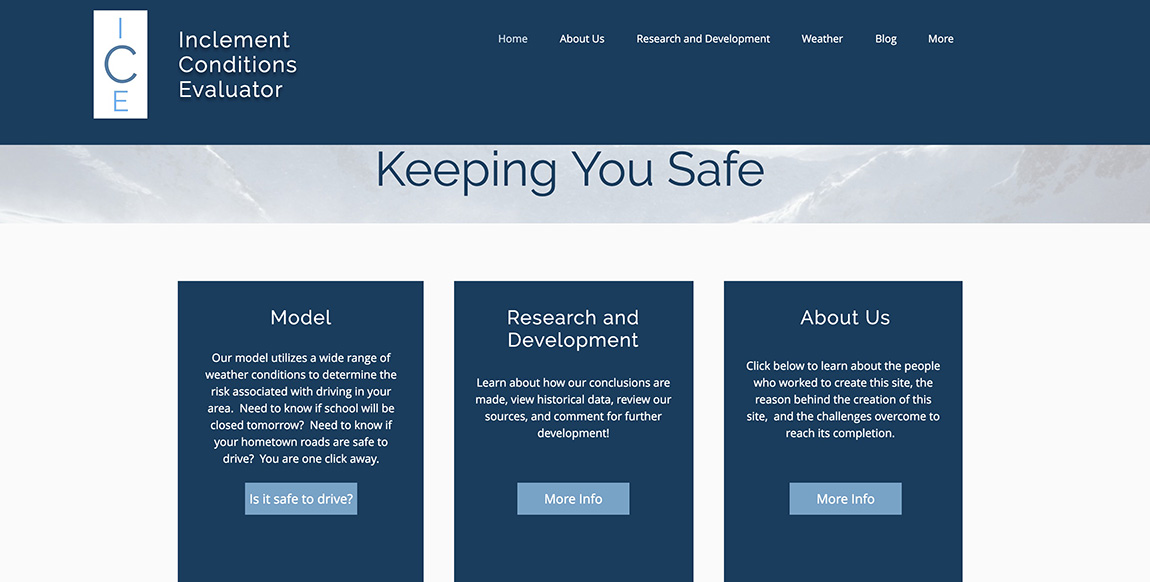
Results from prior research
Results from previous research done to explore the impact of Expo Fest projects completed by students in teams indicate that the experience leads to increased interest in STEM and STEM-related postsecondary study (Oh et al. 2014). The STEMStarter Capstone built on those results and applied a similar program structure and evaluation methods from those team projects to the individualized capstone program. Results from a rigorous quasiexperimental study indicated that students that participated in the Skills21 Expo Fest Challenge Project had statistically significant higher science achievement scores and marginally significant increases in 21st-century learning skills compared to other students (LaBanca, Lorentson, and Oh 2014).
Research completed by Holmes et al. (2018) indicates that to increase STEM interest, there needs to be a focus on exposing students to STEM careers, especially for students without familial connections to STEM fields. Building on prior evidence of the effectiveness of the Skills21 challenge-based model and current workforce needs, the capstone program and culminating Expo Fest experience were designed to increase STEM career interest. Completing an Innovation Challenge Project gives students the opportunity to not only increase their knowledge of a particular STEM topic, but to also develop important entrepreneurial and career readiness skills that employers value. Anticipated outcomes include the cultivation of skills critical to starting a business, such as creativity, managing ambiguity, and marshalling resources, and STEM skills such as scientific inquiry. By working with a mentor from the field, students are exposed to STEM and entrepreneurial career opportunities.
Student experiences: Initial findings
To document students’ experiences in the capstone program and understand how the program contributes to the development of non-cognitive skills, researchers at the Education Development Center collected qualitative and quantitative data during the first full year of STEMStarter Capstone implementation in the 2017–18 school year. This initial year of data collection served as a pilot study to test instruments and gather preliminary data to inform a subsequent study of student outcomes with a comparison group of non-participating students occurring in 2018–19.
Methods and data collection
For the pilot study, researchers gathered evidence of changes in students’ self-reported skills over time. A total of 25 students at four schools participated in focus groups and interviews at the end of the school year. Schools serving communities with both higher and lower socioeconomic status were selected, as well as a mix of teachers with different lengths of experience working with Skills21 on similar projects.
In addition, STEMStarter students at the 11 participating schools were invited to take pre- and post-surveys about their self-assessed levels of STEM college and career interest, entrepreneurial skills, inquiry skills, and STEM self-efficacy. A total of 147 students at nine schools (33% of participants) completed both the pre- and post-intervention surveys. Changes in these self-ratings before and after participation in the program were calculated. For the outcome study being conducted in the 2018–19 school year, comparison students taking traditional capstone classes in each school are also completing pre- and post-intervention surveys so that the effect of participating in STEMStarter can be measured.
Measures
Student survey items were drawn from existing measurement scales that had demonstrated evidence of reliability and validity in similar student populations.[1] Each scale consisted of three or more items, which were averaged to create a total score on the scale for each student. Focus group protocols explored students’ persistence and their reactions to obstacles encountered while developing their projects.
Results
The pilot study survey, based on paired t-tests, found statistically significant increases from fall to spring in STEMStarter students’ entrepreneur skills, specifically in the areas of creativity, managing ambiguity, marshalling resources, and entrepreneurial self-efficacy, as well as scientific inquiry skills. Differences were not found in the other aspects of entrepreneurship skills, STEM self-efficacy, or STEM interest. Results are summarized in Figure 3.
The following scales were adapted for the survey: STEM21 Survey-Inquiry Skills, STEM Career and Education Interest (Oh et al. 2014); Octoskills Entrepreneurship Education Measurement Tool-Secondary Level (Moberg et al. 2014); Patterns of Adaptive Learning Scales (PALS) – Academic efficacy (Midgley et al. 2000).
In focus groups, virtually all students reported that they encountered at least one obstacle in the course of their project development. Many students needed to make either a significant change or pivot from their original idea. Obstacles included finding that their product already existed, realizing that the scope of their project was too big to complete within the year, or understanding that they did not have the resources (knowledge, time, finances, technology) to complete the project. Most students described the initial roadblock in negative terms, including feeling discouraged, upset, or physically ill. However, all of these students strategized to successfully navigate the roadblock and move forward. Students returned to their original list of ideas, salvaged parts of their original plan, and reconnected with their passion for the idea to come up with a new one. Some students even described the experience of overcoming the roadblock as a positive experience. One student felt that his new idea would reach a broader audience, stating, “There’s a lot more use for [the new project], and I was really excited about that.” Other students felt good about working through the obstacle and creating a successful project; the process contributed to the students’ sense of self-efficacy. One student reported, “I had a lot of setbacks and I guess failures in my project where I had tried different platforms to make my website, and every time that I switched to a new platform, it just didn’t work out. So I think the thing I liked about my project was that I was able to actually find a suitable platform to make it, and then it worked well.” Another student said, “It actually worked… Took a long time to develop it. But once I did my first data collection test, it worked!”
Many students found the context of the problem—solving a real problem and developing a solution that worked—to be a strong motivator and source of pride in their own skills. The out-of-school application of the project was a key factor in motivating students to complete their projects. One student said, “I had people from my cross-country team use [the product] and try out my website…They actually thought it was beneficial for them. So they actually learned something from it. And that’s what I liked most about my project.” Another student noted, “I was proud of how, when I took [the product] to the office setting, it was able to accomplish its goals… And I had several of the people over there try it out, and it actually worked and helped improve people’s posture and made them more aware of how they were sitting.” Another student liked that they could focus on something they cared about: “We have a lot of projects during the year, but this was the first project where I had control over the topic. Nobody could tell me that it is wrong, or tell me not to be interested in it.” Many students were more motivated to complete these projects because of their interest in the subject. One student summarized her feelings by saying, “Normally I struggle to write one page for my projects, but because I was so interested in this, I was able to write a lot about yo-yos pretty easily.”
Discussion
The STEMStarter Capstone program was designed by Skills21 to increase student interest in STEM careers and to improve students’ non-cognitive and entrepreneurship skills. Career opportunities that require STEM skills and non-cognitive skills are rapidly growing in Connecticut, and high school graduates need exposure to these career paths prior to college. STEMStarter allows students to explore an area of interest or passion, and then asks the student to address a problem in that area with an original innovation. Through connections with mentors and the community, students learn about career opportunities in an authentic manner. While the first STEMStarter students are not yet college graduates, feedback from teachers and students indicates that many students have entered college with a major in mind that was sparked or affirmed by their work on their Capstone project. Students need this capstone opportunity to learn beyond the walls of the classroom. STEMStarter is an ideal launchpad and structure for students to explore opportunities in different STEM fields.
Acknowledgments
This work was funded in part by the National Science Foundation (grant #1614182).
Elizabeth A. Radday (radday@edadvance.org) is research specialist at EdAdvance in Danbury, Connecticut. You can find her online at www.skills21.org, on Twitter at @ECskills21, and on Instagram at @ECSkills. Katherine A. Shields (kshields@edc.org) is research scientist at Education Development Center in Boston, Massachusetts. You can find her online at www.edc.org, on Facebook at the EDC page (@edc.worldwide), and on Twitter at @EDCtweets. Joshua Cox (jcox@edc.org) is research associate II at Education Development Center in Boston, Massachusetts. David Bamat (dbamat@edc.org) is research associate I at Education Development Center in Boston, Massachusetts.
Careers STEM Informal Education



